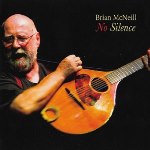
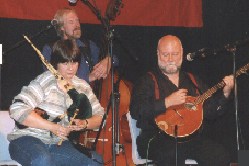
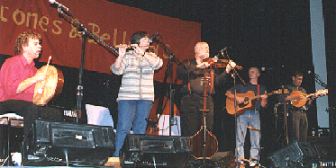
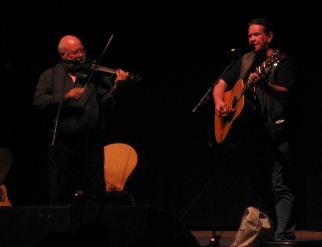


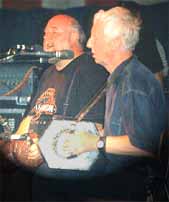

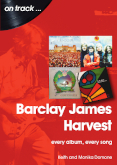
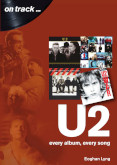

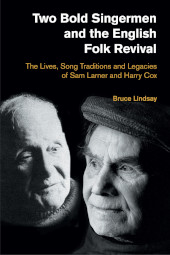
Both men were born in the late 19th century in rural Norfolk, an English county with a poor reputation but rich in song. So while spending their working life in hard manual labour, a farmhand and fisherman respectively, they became singers at an early age, amassed large repertoires of songs that are now established in the canon of traditional English music, became key figures in the folk revival of the 1950s and 1960s and influenced many a performer whose name is more familiar than these two.
Harry Cox (1885-1971) and Sam 'Funky' Larner (1878-1965), the nickname bestowed upon him as a result of his unpredictable moods, Two Bold Singermen.
They learned songs at home and school, sang along for pleasure while working, acquired rhymes to help learn their trade. In days of yore, afterwork music at the pub was, besides the drinking, something to cheer yourself up, that was all the frolic we had.
When Sam Larner later appeared at London's folk clubs, Ewan MacColl recalls:
A young Martin Carthy observed hearing Sam and started an incredible career as a folk singer. Peter Bellamy grew up in Norfolk himself; he went from skiffle to American folk music before he discovered that England had its own tradition. Six out of the twelve songs from his 1968 debut solo album came from Sam and Harry's repertoires, such as "Georgie"[64] and "The Lofty Tall Ship".[71]
Probably, Sam's major contribution came through the Radio Ballads series developed by Ewan MacColl and Peggy Seeger.[37] MacColl's song "The Shoals of Herring," featured on "Singing the Fishing" which won the Prix d'Italia for best radio documentary (1960), was made out of Sam's recorded memories. Seeger remembered that when Sam first heard it, he declared "I known that song all my life." (By the way, the song is played in the Cohen movie "Inside Llewyn Davis"[53] by the folk singer to his moribund father as a song which he used to like in his younger days; they year is 1961.)
Already in the 1950s, Harry had been recorded by Alan Lomax under the production of a young David Attenborough for BBC television. Sam's "Now Is The Time For Fishing" on Folkways Records in 1961 had been the first full-length LP devoted solely to one English traditional singer.


Songs from their repertoires have inspired many revival performers and later folk-rockers. Only recently, Mossy Christian recorded "The Thresher's Daughter",[74] which Harry sang as "Betsy The Serving Maid" to song collector Mervyn Plunkett in 1958. Just one more as an example:
Two Bold Singermen is about the proverbial life and times of these two ordinary but exceptional men, about the Norfolk area and its goings-on, and not least about music and song. Bruce Lindsay clears up a few myths along the way by not only interviewing the two but a plethora of artists from Armstrong Frankie to Seeger Peggy. You can tell their story academically or put some flesh to it. For sure, it is an impressive but nonetheless casual reading matter.
Bottom line:
Our Story, Comic Book-Style:
Our founders Tim and Denise Duffy got together with artist Gary Dumm to give you — in comic book form — the full story of how Music Maker got started
26 years ago. Follow Tim and Denise through their earliest encounters with figures like James "Guitar Slim" Stephen and Guitar Gabriel in the drink
houses of Winston-Salem, North Carolina, through to the miraculous appearance of the critical donors who first made it possible for us to support our
partner artists.
Harvey Pekar, the American underground comic book writer and music critic, was best known for his autobiographical American Splendor comic series. In 1989, Harvey wrote about the Music Maker Blues Revue for an upcoming concert in his hometown of Cleveland. Tim visited with Harvey the next day at his home and together they agreed to do a comic strip on Music Maker artists. Harvey enlisted his long-time illustrator Gary Dumm and wrote the first two comics in the series. When Harvey’s American Splendor became a hit movie in 2003, Gary took the helm and has been creating dozens of these comics ever since.
A Deeper Dive Into Music Maker's Origins: We hope you'll take a more extensive look by watching "Toot Blues", a 2006 documentary featuring Music Maker founders and many of our beloved partner artists — Guitar Gabriel, Macavine Hayes, Beverly "Guitar" Watkins, Captain Luke, and many more.
In the late 1980s, Timothy Duffy, a penniless North Carolina musicology student, set out to document and preserve traditional southern roots and blues music. On his travels from Winston-Salem's drinkhouse music scene, an off-the-grid hotbed of gritty traditional blues, to deep-south family run churches, he found purpose and inspiration from a cast of amazingly talented, pure and unique set of characters (the artists!!).
"Toot Blues" remarkably captures the true essence and talent of the artists from Guitar Gabriel, a 'homeless magic potion selling' blues genius; to Willa Mae Buckner, a snake charming elderly woman taunting delightfully raunchy blues; to Beverly 'Guitar' Watkins, a grandmother who continues to tear up the stage and play a killer electric guitar behind her head; to Bishop Dready Manning and family churning out homebrewed rockabilly-gospel; to Boo Hanks, an 80 year-old bluesman recording an album for the very first time; to blind guitarist, Cootie Stark, mesmerizing crowds world-wide while never failing to find his way home by himself.
Shortly after befriending and championing for these artists Tim quickly realized the limitations set upon them by living in poverty, not only in their struggles to survive and support their families but also their ability to afford time and outlets to continue with their deepest passions-music, by a simple twist of fate, Tim along with his wife Denise, began the Music Maker Relief Foundation.
With rare footage, interviews, and numerous live performances, the film documents these unique musicians, brought together through the Music Maker community and their shared and vital musical heritage.
— Music Maker Relief Foundation
A young multi-instrumentalist from Skye, Malin Lewis has composed tunes for the Great Highland Bagpipe, for fiddle or whistle, and for the innovative 2-octave Lindsay System smallpipes which add a new dimension to Scottish pipe tunes. This beautifully presented book contains fifty of Malin's compositions, written over the past seven years or so, but despite their teenage provenance the tunes here show a maturity and variety which is unusual for such a young composer. Malin is currently 20, I believe, and studying in Helsinki this year, but returning in September to complete a degree at Glasgow's RCS. The striking cover art was created by Philippa Thomas: pretty much everything else was done by Malin.
This collection is organised by tune type. Starting with some modern pipe marches, Malin Makes Music offers reels, jigs, slow airs and several other forms. There are seven 7/8 numbers here, a form which has become almost obligatory on Scottish piping albums, and which may mark this book as a product of its time. The first piece, a powerful 2/4 march dedicated to Skye piping tutor Ian Ruari Finlayson and simply entitled Ian Ruari's, establishes Malin's credentials as a traditional piper and a fine composer in that idiom: it also shows the crisp and clear typesetting, including gracenotes, and the helpful but unconventional decision to add a key signature of two sharps to the pipe music pieces. The D major key signature makes these tunes more accessible for non-pipers, but what they will make of the complex gracenote ornaments is another matter. About half the book is annotated with piping gracenotes, and the other half is written for non-pipers although much of that material could also be played on the highland pipes, and most can be accommodated on border pipes. Even the Bb key signature of Govanhill is just a marker of G minor, in a 5/8 tune which shifts to D major in the B part, so not too outlandish for a skilled piper.
Maybe not the complex rhythms of Orange Triangles though, another 5/8 in E major, ranging from low C# to high C#: this might be one to leave for the fiddlers! On the other hand, the modern piping reel Iridescent is given a key signature of three sharps but I really like it with G naturals and it fits on the nine-note scale - a nice syncopated reel for any instrument, but well suited to the pipes. Malin's tune names follow patterns - the sea, musical influences, the colour orange - there's a page at the back of the book with explanations of some of the less obvious ones, great information for gigging musicians to throw into their stage act, explaining the profound Scottish philosophy behind Ten Cullen Skink and a Haggis Supper for instance. Dedications to Willie McCallum and Finlay MacDonald sit alongside pieces for family pets, and inspiration has varied from the calm of Shoe Bay to the cosmopolitan bustle of The Old Inn, a trendy bistro in Carbost. There's lots to explore here, lots to enjoy, and lots of experimentation to be had regarding tempos and ornamentation of these tunes.
— Alex Monaghan

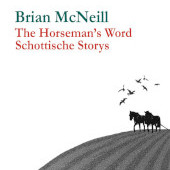
Brian McNeill is an artist whose musical oeuvre, both with the Battlefield Band and as a solo artist, I've been following for a long time. Again and again he succeeds in a stroke of genius, not least his current album "No Silence". I've also read a few of his mystery novels featuring crime-solving busker Alex Fraser. Even if these are not necessarily suspicious for the Nobel Prize for Literature, I had long made up my mind to read one of these books again.
It was probably a wink of fate that his short story collection The Horseman’s Word fluttered onto my table. It contains half a dozen stories: Farmers shortly before the Great War, a dance school in the 1950s; the Korean War cripple Flash Gorton. These are impressions introducing the life and goings-on in and around Brian's hometown of Falkirk, located between Edinburgh and Glasgow. The real hero is the language, namely the area's dialect and colloquial language, which from Brian's point of view is so "subtle, succinct, pithy and pungent".
Gabriele and Julian Haefs translated the stories from Scots into German. Thankfully, they don't let the protagonists babble in exaggerated slang or an invented idiom à la Sch'tis. Both volumes, the English-Scottish original and the German translations, are available from Songdog publishers.
While volume 5 of the Maguire-Gavin mysteries is in the pipeline for a couple of years, lets have a look at the last one for the time being:
»All at once, a most exquisite ringing swelled from inside the house. [Detective] Stella [Cusack] peered in through the open window and saw Tessa Gwynne on a low stool behind the door, playing a harp that loooked as if it were strung with gold. Was that even possible, or was it just a trick of the light? Tessa Gwynne's eyes were closed, and her whole body moved to the music, the harp in her intimate embrace. Stella stood, rooted, feeling her chest tighten as the melody grew in urgency. As the music grew from a thrum of low notes to a thrilling race up the scale, she leaned into the wall, overtaken by a wild grief that welled up from nowhere and kept spilling until there was no more, until the miraculous notes finally settled into plaintive dignity, the feeling receding and fading with the notes like lapping waves. Stella felt exhausted... Stella had to drag her gaze from the hand that gripped the door–thick nails, uncannily powerful fingers. Strange how playing heaven's instrument could give one a hellish harpy's claws.«
Archaeologist Cormac Maguire and pathologist Nora Gavin are busy digging in the bogs of Tipperary in central Ireland looking for an answer: How did a ninth-century body get into the the trunk of a dumped car? Why is a popular TV host missing for months pinned beneath it? Both were murdered, though centuries apart. The hunt after a medieval manuscript doesn't allow much time for playing music, and only at the end does Cormac manage to play a lament on his beloved flute at a wake...
Author Erin Hart relates: »There's a lot of Irish traditional music in my books, as you probably know, and I consider my husband's latest recording, The Sailor's Cravat, a good soundtrack to the series. I also offer a few unaccompanied traditional songs from Nora Gavin's repertoire. You might remember that Nora is persuaded to sing 'The Generous Lover' in the Dublin session scene in Haunted Ground. The story of 'Molly Bawn' actually inspired the mystery of Mina Osborne's disappearance. And the third song on the album, 'The Flower of Magherally-O,' is a sentimental favorite, because it's the song I sang onstage the night I met my husband. You can hear a few excerpts of songs and tunes here.«
Photo Credits:
(1ff), (17) Brian McNeill,
(8ff) Book Covers,
(12) Harry Cox,
(13) Sam Larner,
(14) Music Maker Relief Foundation,
(15) Bruno Kowalczyk,,
(16) Malin Lewes
(from website/author/publishers).